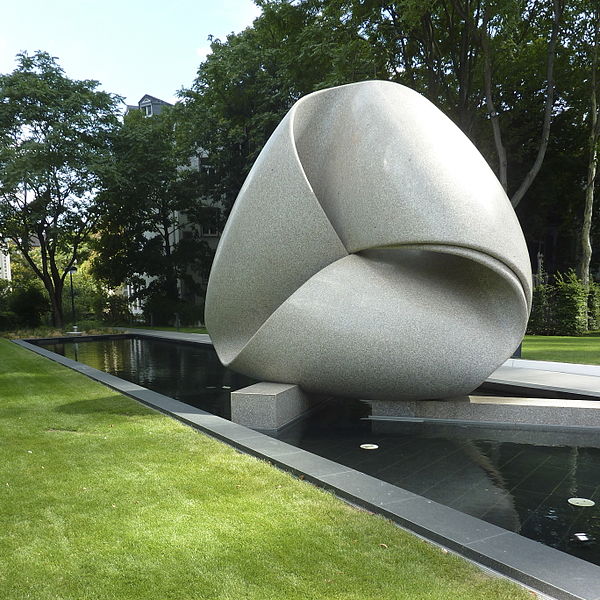Bruno Munari was "one of the greatest actors of 20th-century art, design and graphics". He was an Italian artist, designer, and inventor who contributed fundamentals to many fields of visual arts in modernism, futurism, and concrete art, and in non-visual arts with his research on games, didactic method, movement, tactile learning, kinesthetic learning, and creativity. On the utility of art, Munari once said, "Art shall not be separated from life: things that are good to look at, and bad to be used, should not exist".
Bruno Munari
Bruno Munari photographed by Federico Patellani (1950)
Falkland pendant light designed for Danese Milano
Munari's grave at the Cimitero Monumentale in Milan, Italy, in 2015
Concrete art was an art movement with a strong emphasis on geometrical abstraction. The term was first formulated by Theo van Doesburg and was then used by him in 1930 to define the difference between his vision of art and that of other abstract artists of the time. After his death in 1931, the term was further defined and popularized by Max Bill, who organized the first international exhibition in 1944 and went on to help promote the style in Latin America. The term was taken up widely after World War 2 and promoted through a number of international exhibitions and art movements.
Revue Art Concret, May 1930.
Max Bill, Continuity (Colossus of Frankfurt), 1986, collection: Deutsche Bank, Frankfurt am Main. Max Bill "was keen on creating works based on mathematical and geometric foundations—material manifestations of intellectual processes that resisted symbolism."






